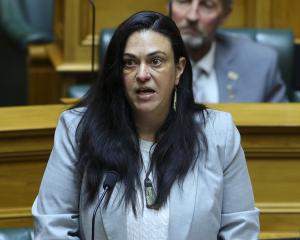After another exemplary performance from Dunedin's Forsyth Barr Stadium perhaps it's time to close the book on a decade of stadium debate.
Saturday's sell-out All Blacks test match brought thousands to the city, its accommodation providers, its eateries and more.
The centrepiece was a game of rugby and our stadium delivered that spectacle in a manner impossible to replicate anywhere else in the country or, with very few exceptions, the world.
It has become one of the great venues for live sport, is rapidly gaining a reputation for live music, and is an ever-present etching of progress and confidence on the city's skyline.
That success, those images, are regularly beamed around the world, married to glowing reports of atmosphere, conditions, facilities and fun.
They showcase Dunedin as a confident, modern, forward thinking city capable of coming together to get something done and done well.
How must that influence those considering Dunedin as a site for study, work or lifestyle?
That does not diminish the issues which split the city 10 years ago.
It was a time when the Dunedin City Council had a looser grip on its spending than many ratepayers believed appropriate.
The stadium appeared as another lavish project, and the biggest of all, to be paid for by the city's seemingly bottomless public purse.
The ensuing debate was heated but necessary.
While it didn't stop the stadium, it did force reflection and prudence around the council table.
The public purse has since been treated with more respect.
Substantial debt remains but has receded thanks to disciplined fiscal management during the council's last two terms.
Ten years ago was also a time where the world was about to descend on our shores.
New Zealand had finally, after losing co-hosting of the 2003 Rugby World Cup, secured sole hosting of the 2011 event.
It was a coup for the country and a coup for the cities hosting matches.
But money was needed to upgrade infrastructure and stadia.
In Auckland huge sums were spent on public spaces and public transport while some $250 million was spent on Eden Park's spruce-up.
That left New Zealand's biggest stadium as essentially the same ground it had always been, in the same place with the same problems, albeit with extra temporary seating, a new southern grandstand and a few other improvements.
Dunedin could have done the same with Carisbrook.
The historic ground was tired and unpopular with World Cup organisers.
It was unsuitable to host World Cup games as it stood and while upgrades between $30 million and $80 million were mooted it would still have been the same ground, exposed to the same weather and in the same area nestled between railway workshops, scrap metal merchants and a motorway.
Instead Dunedin did what Auckland wouldn't for less than the money spent on Eden Park.
It thought big, thought long term and built a stadium from the ground up to a more suitable design in a more suitable part of town.
Seven years later there is still large debt.
There is still a vacant space where Carisbrook used to be.
There is still discontent and upset that the stadium was built, that other council spending priorities have suffered in the time since.
Those are real, reasonable and undisputable issues.
But the stadium is a true asset, a genuine jewel in Dunedin's crown.
That too is undisputable.
Next year another tranche of tourists will descend on Dunedin when the British and Irish Lions come to town.
Money will be spent lavishly around Dunedin and the region as a whole.
Photos, videos, anecdotes and stories will be sent around the world extolling the virtues of our clever little city with its world-class stadium and the can-do people who own it.
Positivity should be a key part of the stadium's true legacy.












